#pakistani women art
Explore tagged Tumblr posts
Text
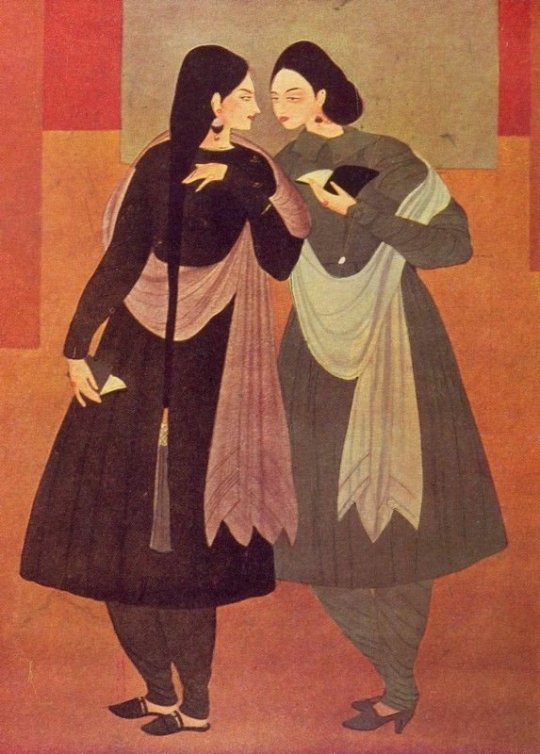
daakvaak: Love this painting of two women lost in intimate conversation by Abdur Rahman Chughtai Image: University of Toronto Archives
(via daakvaak on IG)
#art#painting#abdur rahman chughtai#artist#painter#pakistani artist#pakistani women art#desi art#desi women art#woc in art#pakistani art#south asian art#pakistan#20th century art
123 notes
·
View notes
Text

Nadia Waheed (Pakistani, 1992) - A Fundamental Archetype (2023)
6K notes
·
View notes
Text
@katkastrofa: *writes a single throwaway line in one chapter of Lost and Found that is never referenced again*

Me, completely randomly and with no prompting: Alright, bet–

#my art#artists on tumblr#the legend of korra#original characters#as if I don’t have enough of those already#I really don’t know what possessed me here. I mean. sometimes my mind did drift to this mention of Zaheer’s sisters#because broken bonds is my absolute favourite LaF chapter. but I ever really thought of them that much since Kat never brought them up agai#and then about 24h ago I randomly remembered them again and was like. hey. p’li and ghazan’s sisters play a huge role in our stories#and ming-hua is an only child. so what of zaheer’s sisters? what are they like? do they ever cross his mind? are they aware of his crimes?#and in the afternoon I went digging through my art supplies bc I felt like painting and found my old 2020-2022 sketchbook with 2 empty page#so I thought. why not. it’s been a while since I’ve done traditional art. so I pulled up a reference of rich EK outfits from the artbooks#and got to work. drew this up in about half an hour? traditional sketching is a lot faster than digital for some reason#then took a picture and cleaned up and coloured in procreate. and I’m really happy with the end result#this was hella fun to do as well so.. win-win?#alright enough backstory rambling. on to the characters themselves#I looked up Zaheer’s name and apparently that particular spelling is urdu in origin. so I went off that#the article I found was written edited and fact checked by three pakistani women so I think it’s about as trustworthy as these things go#summiya means ‘a woman of proper name’ and aiza means ‘respected high place in society’. which I thought were fitting for noble girls#for outfits and hairstyles. like I said. I turned to the avatar artbooks. those things are life savers. I just played around with colours#looks wise I colour picked from zaheer and then shifted around a little so they look similar enough yet not like clones of each other#but they’re also teenagers here so they wouldn’t resemble book 3 Zaheer much anyway#kat never mentioned ages but since their mother was looking for matches I assumed they were older than zaheer#he ran off at 11 or 12 iirc. so I decided they would have been 16 and 14 respectively#though in their community matches are probably made much earlier than actual marrying age. still.#if it was such a pressing matter that their mother was ‘preoccupied’ with it. then they were probably teenagers right#that’s what I’m gonna go for anyway since currently I have no information to disprove any of this#oh yeah Kat btw if you did have images of Zaheer’s sisters in mind before this then you don’t have to replace them. I just filled a blank#we’ve never talked about them so I assume there’s nothing. feel free to correct me. maybe someday we’ll discuss their personalities/lives#all I have is that they probably weren’t too close with zaheer. and their lives now are all about husbands kids and status. but we’ll see#hope you like them anyways <3
6 notes
·
View notes
Text
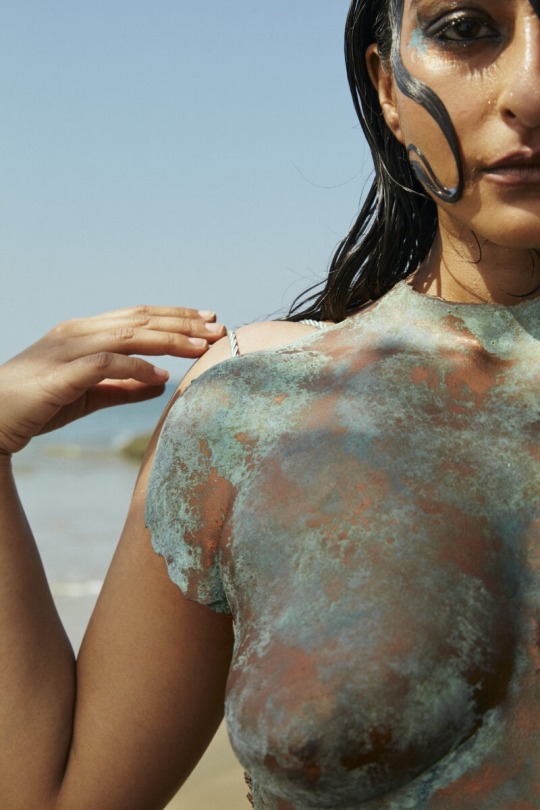


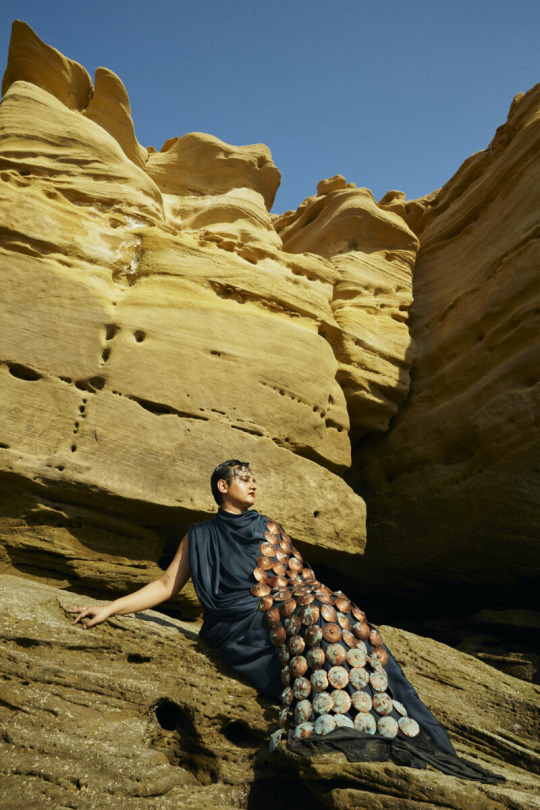
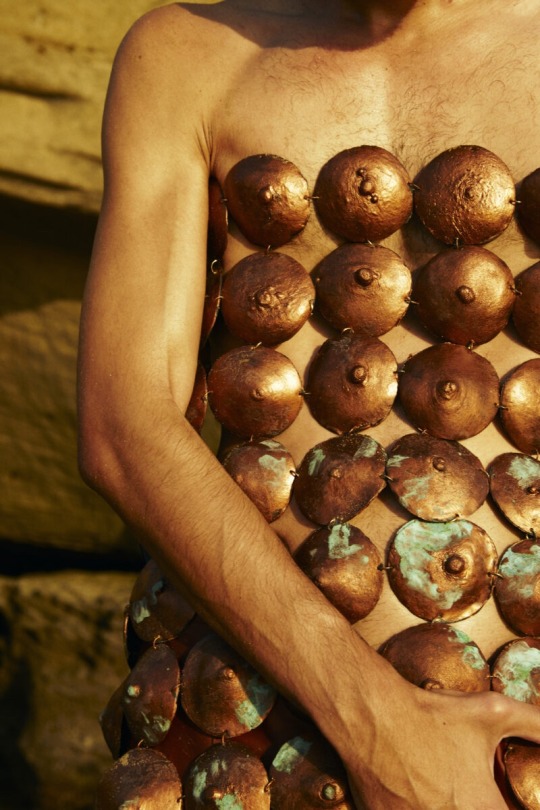
Misha Japanwala is a visual artist and fashion designer of Pakistani origin. Japanwala created art work dedicating to women rights in Pakistan, and her art has been featured in Vogue and V Magazine. In June 2021 Japanwala designed breast plates for American rapper Lizzo's music video "Rumors". Via W
Japanwala was born in London, but to a family from Karachi, and was brought up in Islamabad in a liberal family background. She graduated from the New York Parsons school of Design in 2018 and works in New York City.
6 notes
·
View notes
Text
So a while back I was at an art museum and I saw a piece by a Pakistani woman, Naiza Khan, from this collection and I wrote down her name so I could look her up later and I really wanted to share what I found because her works are really cool. The museum I went to wrote about the piece that it was ambiguous whether the sculpture was meant to be viewed as restrictive or protective, and I liked that angle a lot. This page I posted the link to expands upon that even further and I wanted to share some of my favorite passages:
“In writing about her installation piece The Crossing in which suits of armor created around the female shape set sail in a wooden boat, Naiza drew attention to the year in which she made the installation—1429 Zil-Hajj, an Islamic echo of the Christian calendar’s year 1429 in which Joan of Arc led the French army to victory in the Battle of Orleans. In Pakistan, 1429 Zil-Hajj started during the 40 day mourning period for Benazir Bhutto—like Joan of Arc, a female leader who polarized opinion and died brutally, reviled by some, sanctified by others. The empty suits of armor speak to the history of both women, and force us to ask in which calendar we’re living—15th century or 21st?” (Page 8, Kamila Shamsie)
“… the fact remains that many of the armored pieces are, as Naiza puts it ‘designed to fit the imagination rather than the body.” (Page 10, Kamila Shamsie)
“Those gilded wings might be armored, but the real threat to them comes not from outward attack but from their own forgetful nature. When dreams or imagination descend, or cross over, into another space they are in danger of losing part of themselves.” (Page 10, Kamila Shamsie)
“Her turn to the hard and unyielding metal bodily implements, which include charged objects such as chastity belts, metal corsets, and lingerie made with steel, suggests that the tension between the demands of the social order, and the intractability of the body has sharpened considerably in her recent work.” (Page 12, Iftikhar Dadi)
“What is the possible relationship between obsolete European implements that seek to shape and control the female body, and modern Islamic legal, social, and ethical injunctions for women? Is modern, scripturalist Islam simply being equated with medieval European repression, torture, or confinement? Or, as the reuse of such devices by S & M, bondage and other subcultures in the west suggests, have these devices today primarily acquired the aura of a transgressive fetish?” (Page 12, Iftikhar Dadi)
“Naiza’s work demonstrates that freedom for women is not a simple matter of transgressing or overthrowing repressive social mores, as the very delineation of what is possible to accomplish as an agent emerges within the discursive constraints of the social order.” (Page 19, Iftikhar Dadi)
“Naiza’s work insistently reminds us of this paradox of subjectivation. In order for the voice and the body of the woman to emerge into public space from a condition of invisibility and subalternaity, its presence must be recognized and shaped by discursive norms.” (Page 20, Iftikhar Dadi)
A quote from Naiza herself reads: “I made some images in my little book in July last year [2006]. These were drawings of “bullet proof vests.” I was intrigued by them, and felt they needed to be made in metal. At the same time they felt like something very soft, close to the body, like fabric… The idea of trapping and protection comes together in these pieces. An ambiguous thought, not sure where one idea stops and the other begins… something so prevalent in our society.” (Page 21, Naiza Khan)
“The welding points on the metal armatures are further allegorized as Heavenly Ornaments, suggesting that the terrible beauty of the violent forging of the metal joint is a necessary accomplice for subjective expression. The works in metal do appear to offer a choice—the ability to wear them or discard them at will. But this choice is essentially an impossible one, in that it is situated between the inarticulate, excessive, and private body, and the normative female body that is increasingly public and visible but forged by discursive norms that allow it to speak only by simultaneously working both violence and protection upon its bodily excess.” (Page 23, Iftikhar Dadi)
I encourage you to read the whole thing, because there’s a lot more discussion of the politics of her pieces, both in terms of feminism and Islam, and about how the artistic choice of her refusal to showcase head coverings (and, to a lesser extent, western beauty standards as well) in her physical works (while addressing them in written works instead) is symbolic. I really like the idea of the clothing being stuck between protecting you and harming you, showing you off but in a consumable way, and how she touches on the false perception of the choice that we have in the matter. She also has some other really cool works shown elsewhere on her website that aren’t part of this set (lots of watercolor!), some of which seem to be inspired by living conditions of people in Pakistan, the ocean, or South Asian history. She also has an instagram if anyone is still using that and wants to check out more of her work.
#women#women in art#women’s art#pakistan#islam#muslim women#muslim artists#radfem#radical feminism#south asia#south asian women#pakistani art#naiza khan
13 notes
·
View notes
Text

indian and pakistani yuri 💜
there's been a trend on twitter, where asian women have been so dissatisfied and disgusted by asian men and their actions, that they've resorted to drawing yuri amongst the women of their countries. it started with cool korean woman and cute japanese women, and it's spread to GL artists all over Asia drawing the cutest sapphic art! here's me contributing to it by drawing south asian sapphics. <3
(I've forgotten how to write neatly in hindi orz it's been so long since I've had to handwrite in hindi at all ueueueueue)
#desi#desiblr#desi tumblr#sapphic#sapphism#yuri#girls like girls#girls love#india#pakistan#artists on tumblr#digital artist#wlw post#wlw#wlw yearning#the girls and the gays won#girls kissing girls#original art#sketch#art blog#digital art#rkgk#illustration#digital illustration#<3#my art#wlw art#desi sapphic#desi lesbian#local himejoshi drawing what she loves
33 notes
·
View notes
Text
The Sign of Four: The Story of the Bald-Headed Man
The Victorians were rather into what is known as chinoiserie, the European imitation of Chinese and other East Asian artistic traditions, although the popularity had somewhat peaked by this point.
The stethoscope had been invented in France in 1816 by René Laennec and the two-ear version was commercially available from 1852. The practice before and without one - see A Study in Scarlet - was to listen to the chest by applying your ear directly too. This was a bit awkward when dealing with a woman, the reason Laennec invented it in the first place.
We've seen Tokay before, in "The Last Bow".
Since tobacco came to Europe, there have been people who couldn't stand the smell. James I of England/James VI of Scotland wrote A Counterblaste to Tobacco in 1604, one of the earliest anti-smoking works. He would impose an import tax on tobacco, then later made it a royal monopoly.
It was also considered taboo to spoke in front of women for much of this period; hence the use of smoking rooms. It was also seen as unladylike for a woman to smoke at all; if she did, it evoked an image of prostitution. Unless you were working class, in which case women widely smoked.
Hookah comes from the Hindustani word "huqqa". Hindustani is also known as Hindi-Urdu; Hindi being the Devanagari-written version used in India and Urdu the Pakistani version written in the Persian alphabet. Both countries have tried to make their two versions somewhat distinct; Hindustani is not used in official terminilogy in either. In speech, the two are pretty much mutually intelligible, if you keep things simple.
The hookah remains popular in South Asia and the Middle East; smoking is not specifically prohibited in the Quran, but in recent decades, a number of very prominent clerics have declared it haram (forbidden). In much of Europe and North America, indoor smoking bans cover hookahs, places that offer them have had to switch to tobacco-free version.
In any event, hookah smoking is really bad for your health - you're basically inhaling the equivalent of 100-200 cigarettes in a single session.
Jean-Baptiste-Camille Corot was a French realist painter. Works of his can be found in the Louvre and New York's Metropolitan Museum of Art, among various other galleries.
Pondicherry, which we've seen mentioned before, is a city on the south-east coast of what is now India; it was a French territory at the time - the British had taken it more than once, but returned to them each time, the last time in 1814.
The lightweight division of boxing today covers weights of 130 to 135 pounds. The current British lightweight champion is James Tennyson, but he has not fought a professional bout since a technical knockout to Jovanni Straffon in 2021.
Agra, located in Uttar Pradesh, is best known as the location of the Taj Mahal, built on the orders of Mughal emperor Shah Jahan between 1631 and 1653 as a mausoleum for his wife Mumtaz Mahal after her death in childbirth in 1631. He is also buried there himself.
£500,000 in 1888 would be the equivalent of over £54m at 2024 values. Not a bad chunk of change.
23 notes
·
View notes
Text
SET THREE - ROUND TWO - MATCH TWO


“Exotic Bodies” (2003 - Aisha Khalid) / “Doubting Thomas” (2023 - Ian Stone)
EXOTIC BODIES: I don’t really have much to say about this painting because the title says enough to me. This is by a Pakistani painter and it just reminds me of how my mother and other women in my family talk about gender roles. Both hidden and exoticized. Besides that the technical ability of this artist is wild to me; I believe this is a miniature. (marwamarwa)
DOUBTING THOMAS: I've been raised christian and there's only one thing I want to keep: the art, because wow. And to me this is even better, because it references religious art but makes my heart flutter. It makes me want to cry for all these years I felt out of place, makes me want to laugh also because now I'm in a better place, makes me want to scream for all the pain the trans community goes through. Overall it gets me feeling a lot of things and I welcome it all. (silent-dreamy-one)
("Exotic Bodies" is a gouache painting done on wasli paper by Pakistani artist Aisha Khalid. It is 20 x 33.7cm (7.8 x 13in) and located in the Queensland Art Gallery in Australia.
"Doubting Thomas" is a oil on linen painting by Ian Stone. It is 12 by 16 in (30 by 40cm).)
55 notes
·
View notes
Text
Books to Try if You Loved Miraculous Ladybug
The way I have always viewed media is that it’s stories, first and foremost, and then the medium comes next. Medium can make a lot of difference in how stories are told, with visual media working quite well for the superhero genre and interiority shining in the written format. I want to draw attention to books that I think lovers of certain stories would also enjoy while also throwing in a few extras along the way and highlighting a diverse range of authors and genres.
If you loved the romance between a biracial artist and someone who likes science, try:
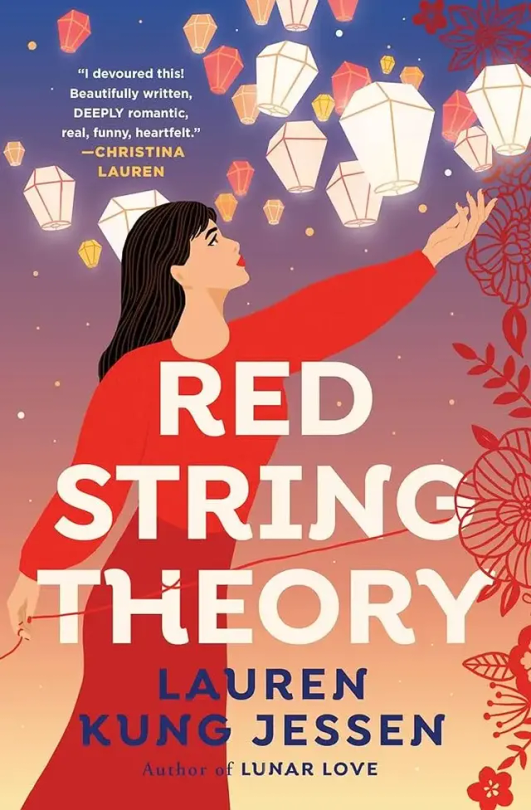
Red String Theory by Lauren Kung Jessen
Rooney Gao grew up the daughter of a famous artist and wants to make a name for herself in the art world independent of her mother, going by the moniker Red String Girl. Drawing from Chinese folklore about the red string of fate, Rooney also follows ideas of destiny in many aspects of her life, including love. Jack Liu is a scientist at NASA who is perfect for Rooney, but his own insecurities and resistance to fate might be enough to keep them apart.
If you loved the Parisian setting and strong fashion components, try:
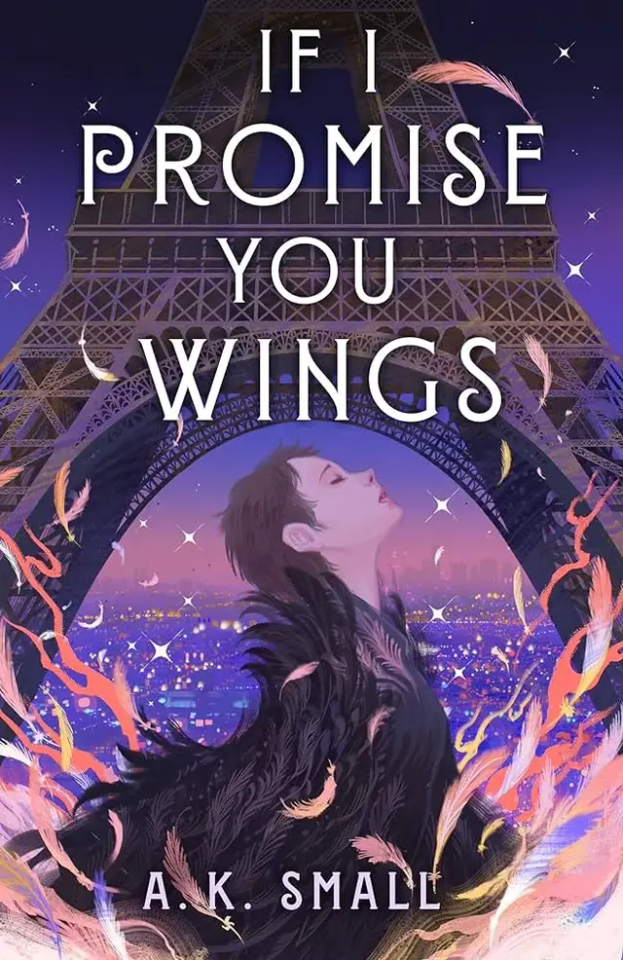
If I Promise You Wings by A. K. Small
A. K. Small spent part of her life in the Sacré-Cœur of Paris and you can feel the city come alive in her story of grief and moving on. Alix Leclaire has graduated high school and lands her dream job at the Mille et une Plume, a feather boutique that plays a part in the haute couture fashion scene. Despite her happiness, the loss of her best friend is still a fresh wound for Alix to heal from.
If you loved the Parisian setting and the exploration of a character with anxiety, but want more of the Eiffel Tower and a Queer historical bent, try
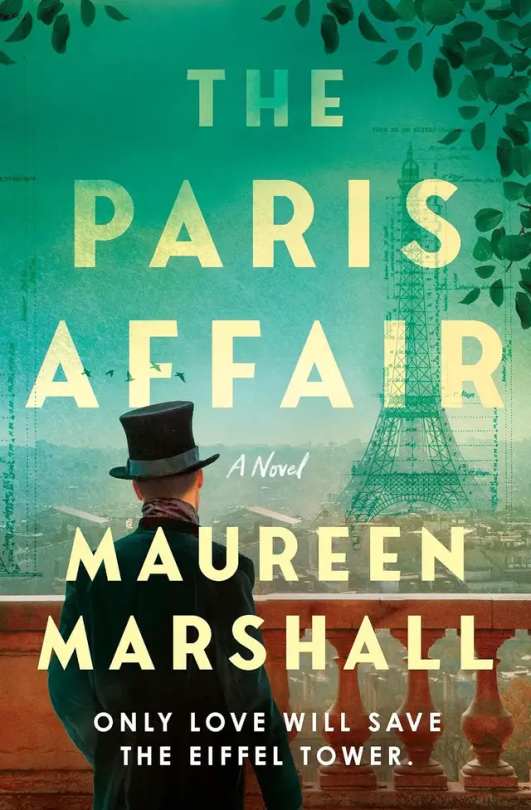
The Paris Affair by Maureen Marshall
Fin Tighe is working for Gustave Eiffel as they work to build the Eiffel Tower in time for the World’s Fair. But as the illegitimate son of an English earl with no other heirs, the guardian of a ballerina cousin who wants to focus on her craft, and the love interest of a member of the Parisian elite, Fin and his anxiety are going to be tested in ways he never thought possible.
If you loved the dynamic of Adrien coming from a famous family and Marinette coming from a working class family with the struggles of making friendships, try

Love at First Knight by Megan Clawson
When Daisy Hasting, LARPer enthusiast from a family of LARPer enthusiasts, is volunteered to be a temporary knight at the Tower of London for a summer camp, the last thing she expects it to find love, let alone with a member of the royal family.
If you liked the secret identities but want a more grounded romance, try
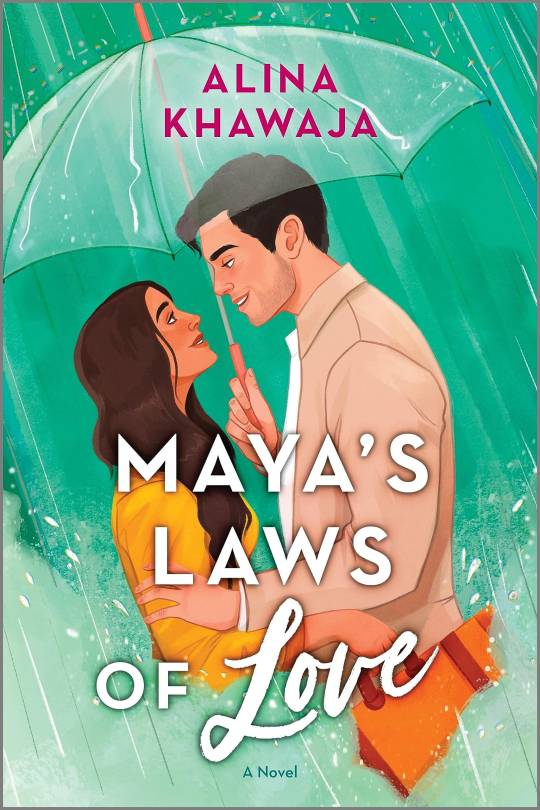
Maya’s Laws of Love by Alina Khawaja
School teacher Maya Mirza has agreed to an arranged marriage with her friend from college, but on her way to Pakistan, she Sarfaraz, a Pakistani-Canadian divorce lawyer who is cynical towards love and romance. Both keep meeting up as roadblock after roadblock appears on their way to Pakistan.
If you loved the magical girl elements, but want an adult POV, try
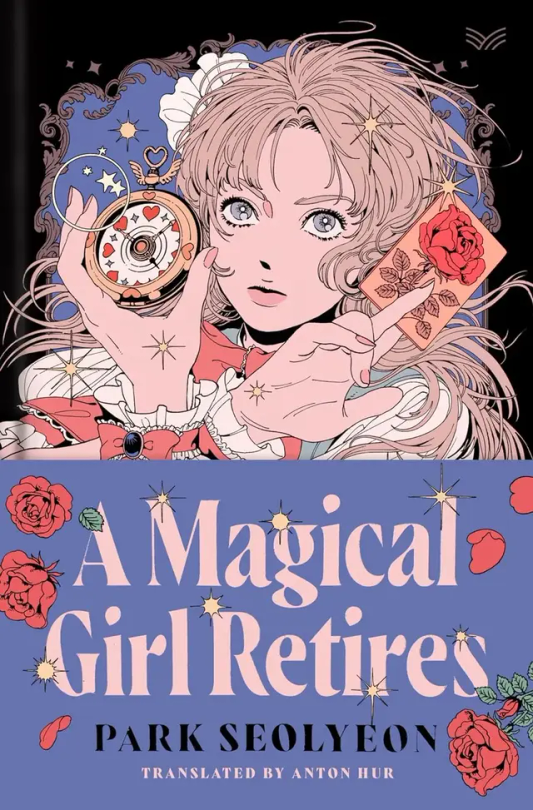
A Magical Girl Retires by Park Seolyeon trans. Anton Hur
When the protagonist is told that she is the legendary Magical Girl of Time, she’s thrust into the world of women with superpowers. From job expos to credit card debt to discussions around climate change to conversations surrounding grief and loss, this is the perfect book for people who grew up on the magical girl genre.
Bonus:
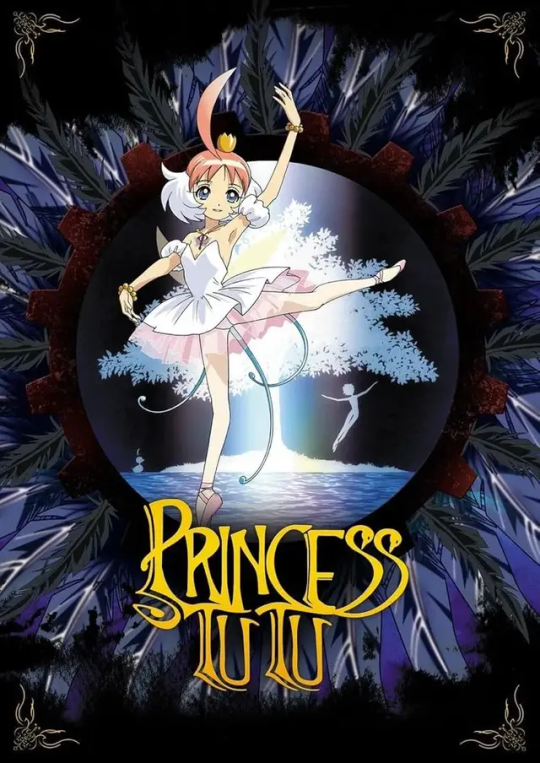
If you liked the monsters being people the MCs know and are impacted by strong feelings, try:
Princess Tutu
When Ahiru is transformed from a duck into the magical girl Princess Tutu to save Prince Mytho, she has to fight her own friends and grow closer to enemies to accomplish her goals, even at the risk of breaking her own heart. A metacontextual examination of opera, ballet, fairy tales, and broader storytelling, Princess Tutu scratches the Miraculous itch while also doing something wholly new.
You can also find this post on substack under:
6 notes
·
View notes
Note
if anyone, who do the two women in your latest art represent?
for me they have multiple meanings. One is an obvious theme of self-love, mixed in with overcoming comphet and self-critique based on beauty standards (blue skin can be a symbol for dark skin, also a holy color because it's often used for krishna). Another is protecting queer love, protect the flame of love and passion and don't allow it to be snuffed out. For reference in devdas, Paro's love for Devdas is symbolized by the burning oil lamp (diya) which she keeps lit despite everything (spoilers it's only extinguished when dev dies). It's also a subtle nod to the pakistani artist Sadequain who frequently employed themes of contemplation and self-reflection. However, I do want viewers to come up with their own interpretations!
thank youuuu for asking <3
12 notes
·
View notes
Text
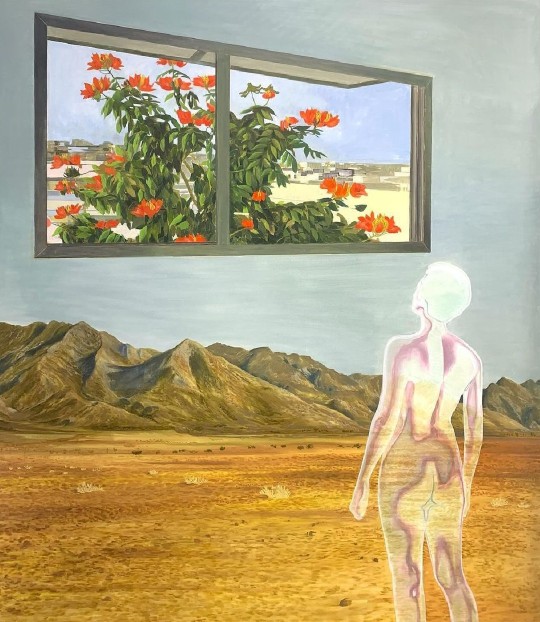
Nadia Waheed (Pakistani, 1992) - Revenant (2023)
2K notes
·
View notes
Text
Twitter users ruthlessly mocked and condemned a new statue installed atop a New York City courthouse, with many claiming that it had allusions to "demonic" imagery.
The new eight-foot-tall golden statue by Pakistani American artist Shahzia Sikander now stands on the roof of the state courthouse in New York’s Flatiron district next to previous statues of respected lawmakers Moses, Confucius and Zoroaster.
The "NOW" statute, with curling braids and tentacle-like arms rises from a lotus flower, was created to pay homage to Ruth Bader Ginsberg and her fight for abortion. The statue is adorned with the late Supreme Court Justice’s signature lace collar.
Sikander said the statue is part of an "urgent and necessary cultural reckoning underway as New York reconsiders traditional representations of power in public spaces and recasts civic structures to better reflect 21st-century social mores."
BLACK SCULPTOR'S MLK STATUE REPRESENTS 'WHITE AMERICA' BUTCHERING HIS LEGACY: WAPO COLUMNIST
It is the first female statue to become part of the courthouse’s plinths.
The statue's reveal did not go over well with social media users, with many prominent Twitter accounts taking issue with its design and messaging.
Daily Signal Senior Report Mary Margaret Olohan said the new art piece had a "bizarre resemblance" to Satanic imagery.
"Was there any public input whatsoever before a satanic golden medusa demon with tentacle arms was installed atop a downtown courthouse?," NYC Councilwoman Vickie Paladino asked.
"Who thinks this is okay? And how do we go about removing it?"
'SNL' ALUM LESLIE JONES ROASTS CONTROVERSIAL MLK STATUE, COMPARES IT TO LEWD SEX ACT: ‘I CAN’T UNSEE IT!’
American conservative political commentator Michael Knowles also suggested that the statue be not only removed, but publicly destroyed.
Christopher Bedford, the executive editor of an upcoming journal at Common Sense Society, compared the statue to a demon and a "terrifying" civilization that practiced human sacrifice found inside an archeological dig.

"It is designed to unsettle and spread ugliness," he added.
"NYC Courthouse has put up a gold horned "goddess" statue to symbolize resistance & abortion rights. It literally looks like a demon. America loves celebrating death," Elevate Beauty CEO & Founder Amanda Ensing tweeted.
Many comments compared the statue to Slaanesh, the "Dark Prince" and god of excess depicted in the tabletop game Warhammer 40K.
Many others also expressed disappointment and shock over the new statue.
Speaking more to the statue, the artist said the statue was called "NOW" because it is needed in a moment when women’s reproductive rights are under siege.
"She is a fierce woman and a form of resistance in a space that has historically been dominated by patriarchal representation, "she added.
The sculpture will be removed in June when it will head to Houston, Texas.
47 notes
·
View notes
Note
OOOOH can I ask why u didn’t like polite society? I overall liked it but I def preferred We Are Lady Parts, also by Nida Manzoor, and ultimately had more nitpicky criticisms of PS than Lady Parts
yeah i feel the same way tbh and i'm wondering if it's bc polite society was a movie as opposed to a show so it didn't necessarily have the same amount of time to really develop its plot points or characters? but i feel like what ultimately bothered me is it was sort of a movie about ria at lena's expense. like aside from that initial scene about lena trying to make art, she was never really afforded personhood outside of the immediate arranged marriage plot and ria largely facilitated that. which i think the movie tried to critique obv but i don't think it accomplished that effectively bc ria was sort of conveniently excused of being held accountable for her obscurity of and projection onto her sister bc she was right about raheela's secret plan all along. so it ended up being less a movie about sisterhood and more a movie about.. ria was right the whole time and ofc raheela was evil and now everyone is happy the end? which is oversimplifying it a bit but that's how i came away from the movie feeling, like i knew absolutely nothing about lena other than that she wanted to do art once, dropped out of art school, thought she wasn't good enough, done. she was never really afforded the same amount of detail or introspection that ria was and resultantly felt like less of a character and more of a prop. i also understand the raheela plot was largely satirical exaggeration but i feel like when juxtaposed against the sister conflict it was very.. awkward? like comparatively in we are lady parts even though there's moments of ridiculousness and exaggeration it does ultimately maintain a realistic tone. and this movie felt like it was split in trying to tackle realism and absurdity at the same time and it didn't mix well for me at all in the end.. like i hate to make this comparison bc frankly i'm not a fan of this movie eitherjklgjdfhkfg but in greta gerwig's little women at least if there was a plot about jo fearing losing her sisters to marriage it was balanced out by the fact that those sisters actually had lives and personhoods and dreams that were shown in full measure. but like i already said lena didn't really get her own perspective in this movie and so it felt more like ria was angry about losing someone to arranged marriage than she was angry about losing her sister. like does that make sense? bc obv within pakistani society the practice and threat of arranged marriage is a very real one and ofc there's a worthwhile story to explore in a younger sister fearing her older sister will lose out on her dreams and aspirations if she opts for marriage out of a sense of failure and depression. but the way that arranged marriage was just so absurdly and cartoonishly portrayed kinda undermined the whole thing for me bc it felt less like ria was saving her sister from a societal institution and more like she was saving her from a random evil cartoon villain
and i think that in turn kinda veers into how most of the characters in this movie generally felt very, very generic. not only when it comes to motivations and archetypes but frankly also culture. like i couldn't really tell what anyone was beyond a generic south asian. culture was such a minimal part of the picture beyond the negative parts of it the movie chose to focus on and i simply find that unbelievable like even the most burger and liberalized pakis i know are entrenched in being paki. and i know that's an unfair assumption to make of any diaspora paki like i'm sure many are not entrenched in culture but it's about the little things yknow? like trinkets around the house, or family pastimes, or little endearments, or trips to paki desi stores. this movie felt so removed from that semblance of the everyday. like it could've been about any group of asians really. and that's a bit ironic too bc despite being a movie about pakis most of the cast were actually indian. which to be clear i'm not someone who gets up in arms about nationalist identity etc like that's dumb and frankly we should never have been separated into two countries. but i think if you're making a movie about paki muslims then they should sound like paki muslims, no? every butchering of terms was not a knife to my chest per se but it was certainly annoying. and i also found it ridiculously hard to believe that even the most posh paki auntie would show up to her son's wedding wearing whatever that atrocity nimra bucha had on was. like even gaudy women dress culturallyglkfjhfg. idk. maybe it's me being too nitpicky but i feel like it's something that bothered me more here than the removal from culture in we are lady parts bc that is precisely the point in the latter: cultural isolation from community. we are lady parts just seemed to go so much deeper into the themes it was trying to explore and i feel like polite society never really broke surface level
#outbox#sorry omg that's so much.. i feel so mean being critical of diaspora media bc it's like!#obv some of this is coming from experience!#but idk i think when you're criticizing your culture it's very easy to fall back on caricature as opposed to substance#and that's what it felt like here#maybe that's something i esp felt bc i've been so entrenched in desi dramas recently and the difference in nuance is. utterly staggering#like maybe it's a personal preference but i want to see abusive and exploitative mothers that feel real and not like cartoons#bc that's what they are. they're not evil for no reason. there's reams of trauma and cycles behind all of it
8 notes
·
View notes
Text
Listen I'm not going to lie, the TV series pickings are SLIM and the shows that does is gay look pretty dire (Watch Spec Ops: Lioness, a bw/bw love story that's mostly about the women's work as gritty brave dark tortured heroic US spies who are also The Troops, now streaming on Paramount+).
But film! Queer cinema!!!! There is so much good gay art! Some of it isn't even from the imperial core, that's how marginalized the queer voices you'll be hearing from are!
Incomplete List of Heterogeneous Queer Films from 2023:
Strange Way of Life (Latino lead, iconic gay director Pedro Almodovar)
Cassandro (Mexican film, biopic overwhelmingly Latino cast, also look up the real Cassandro and watch some highlights from his matches imo)
Mutt (trans man protagonist played by transmasc actor)
Nyad (old white lesbian swimmers)
Monica (trans woman protagonist played by a trans woman)
Joyland - Pakistani film about a trans woman Biba, her straight suitor Haider, and his wife Mumtaz
Frybread Face and Me - Diné kid who is lowkey shamed/punished for liking ~girl stuff~ too much is sent to live on a reservation with his grandmother and cousin. Instead of becoming "manlier" from the ranch chores he learns to do, he instead finds room to breathe, love and acceptance in Diné culture, whose gender concepts and roles are different enough from settlers' that he isn't bullied or "corrected" when he plays with dolls or talks about Fleetwood Mac or hangs out with his cousin Dawn instead of finding a male best friend or a girlfriend. (Is this queer? I don't know but I'm putting it on here because it's a film about the violence and coercion faced by anybody doing their assigned gender "wrong," and how it starts before sexuality, before puberty, at a point in childhood where "boys" and "girls" are differentiated mainly by their hair, clothes and friend group.)
Nimona (animated film adaptation of the beloved comic about a bitey shapeshifting genderfuck goblin and its new gay dad villainous mentor. Trans author.)
Bottoms (sex comedy starring 2 queer teens played by queer women - Rachel Sennott and Ayo Edibiri)
#@ ppl who r sad there won't be a 3rd season of our flag means death (queer pirate show)#this is just the couple of entries that were easiest to find#this isn't even all the queer movies that came out last year!#i didn't even include documentaries#there's so much good stuff out here#i literally just searched LGBT movies 2023#and then i searched 'best free streaming sites'#and there are listicles that will tell you a bunch of torrent sites and list their pros and cons!#right now I'm watching Uncle Boonmee Who Can Recall His Past Lives
2 notes
·
View notes
Text










I’m 19 . I love art. Art in any form . It might be music, dance , painting, movies , theatre,series etc. I like travelling, exploring new places , new cuisines, traditions ,fashion etc. But i have established some lines. They are not very rigid boundaries but some unspoken yet strong ones. I go back and keep listening to the same songs which i love and have sorted them into specific playlists according to their genre. I love watching my favourite shows again and again. There is a show called the bold type which i totally love and adore. It’s a show where they show three friends working in a leading American women’s magazine based in New York. They have some amazing episodes. They have put a spotlight on some really delicate and untouched topics . They have written some brilliant characters. The men in that show are the epitome of how females want men to be in real life . Watching it gives me immense comfort. There’s another show called Hum Tum . It’s a Pakistani drama . Usually Pakistani dramas are very patriarchal but this one has broken many stereotypes. They have portrayed a divorced woman wanting to pursue a PHD and complete her studies , men cooking and doing household chores without hurting their fragile ego , an old man in his 60s enjoying his retirement by being a social media star, a father gradually realising how important his three daughters are. I have watched it many times too. Similarly,there are some movies which intrigues me so much . One of them has to be Eat. Pray . Love where Julia Roberts sets out to find her “word” as she says. My favourite, the holiday, Wake up Sid, Zindagi Na Milegi dobara, Pride and Prejudice, Dear Zindagi, Little Women etc etc. Coming to books, I’ve read some beautiful books which have left important imprints behind them. One of them has to be a book that i had recently read, Pachinko by Min jin Lee . It was so beautiful that i could keep going back to it . I had read a book by Preeti Shenoy named Wake up, Life is Calling. That book is so refreshing, we can keep going back to it again and again. I had read tonnes of Enid Blyton books , the whole of Nancy Drew and other mystery series as well. So when i say comfort zones, i mean a safe space where i escape every time I feel like things are a bit at odds i switch to my comfort shows because they have set the world for me the same as i want . Even with people , it’s not like i don’t like interacting with new people. I do but i feel like the ones i have are enough and i can’t and don’t want to lose them ever. I feel safe like I’m in a cocoon when i talk to my favourite human beings , when i watch my comfort shows or go through some brilliantly written works . I feel at my utmost home when i jot down my thoughts into words. It’s a safe haven. I love dancing. Oh , the joy! It is when i dance I’m the happiest. So we should always keep in close proximity with our safe and comfort zones. It’s not a bad thing. There’s a thin line between being selfish and loving yourself.
7 notes
·
View notes
Text
SET THREE - ROUND ONE - MATCH THREE


“The Plains, from Memory” (2020 - Robert Adams) / “Exotic Bodies” (2003 - Aisha Khalid)
THE PLAINS, FROM MEMORY: [Submitter originally sent in three paintings from this series, but only one was included.] These are my favorite three works in "The Plains, from Memory" by Robert Adams. I couldn't find official pics of them online, which is why I'm using my own photos. I almost cried in the gallery seeing them, they are so familiar it feels like i'm looking at a part of my soul, or more like they're pulling me out of my skin and back into the bigger soul of them and of the place (snakest1cks)
EXOTIC BODIES: I don’t really have much to say about this painting because the title says enough to me. This is by a Pakistani painter and it just reminds me of how my mother and other women in my family talk about gender roles. Both hidden and exoticized. Besides that the technical ability of this artist is wild to me; I believe this is a miniature. (marwamarwa)
("The Plains, From Memory" is a series of paintings on wood by Robert Adams. It was exhibited at the Fraenkel Gallery in San Francisco from March 31 to May 27, 2022. This photo was taken by the submitter!
"Exotic Bodies" is a gouache painting done on wasli paper by Pakistani artist Aisha Khalid. It is 20 x 33.7cm (7.8 x 13in) and located in the Queensland Art Gallery in Australia.)
52 notes
·
View notes